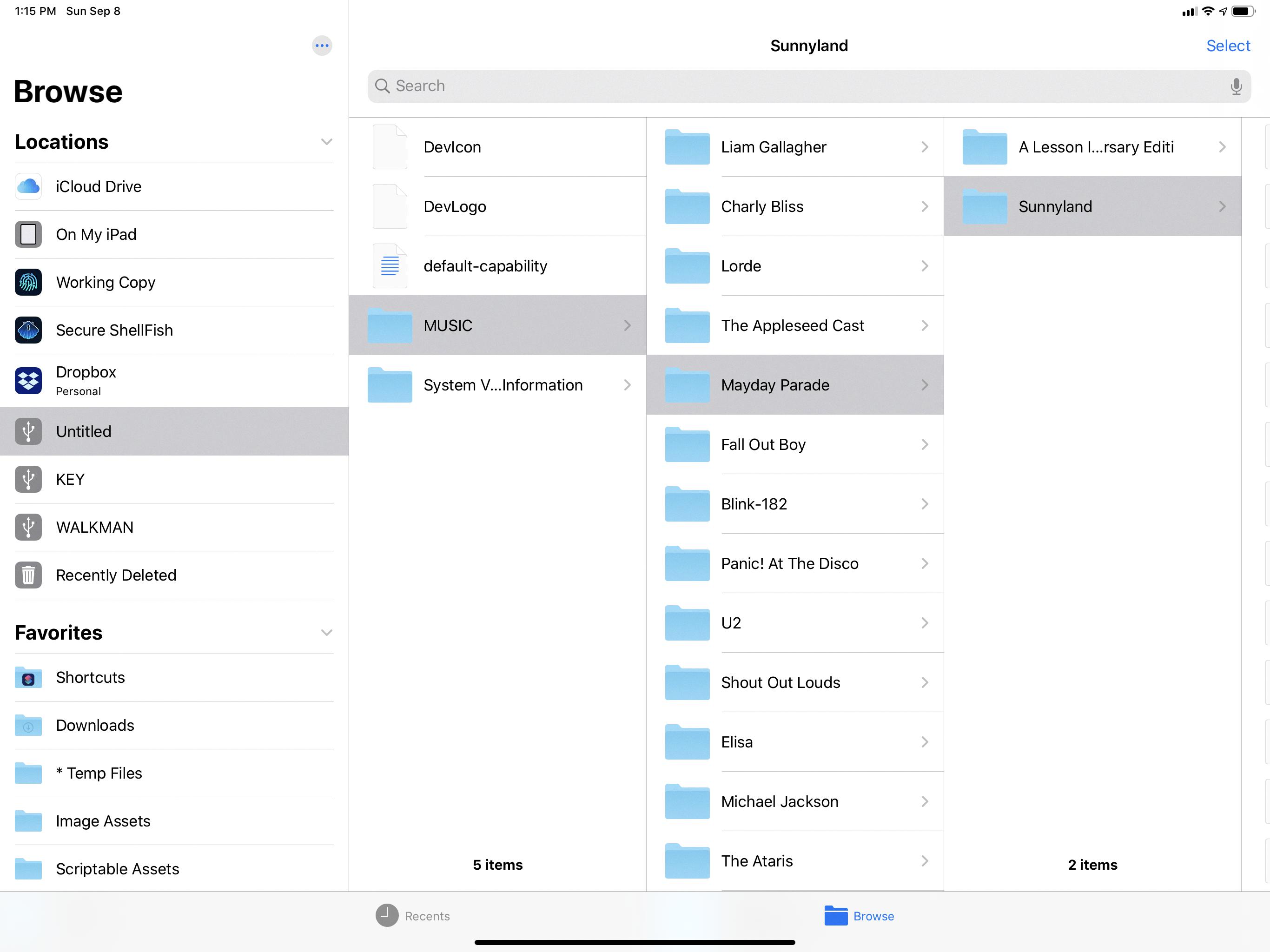The iPad is a versatile device that allows users to perform a wide range of tasks, including browsing and accessing files. One important feature for many users is the ability to connect to a computer or file server using the SMB (Server Message Block) protocol. In this article, we will explore the options available for SMB file browsing on the iPad and how it can enhance your productivity.
To connect to a computer or file server using SMB on your iPad, you can use the built-in Files app. This app provides a convenient way to access and manage files from various sources, including SMB servers. Here’s a step-by-step guide on how to connect to an SMB server using the Files app:
1. Tap on the “Files” app icon on your iPad’s home screen to launch the app.
2. At the top of the Browse sidebar, you will see a “Tap” button. Tap on it.
3. A menu will appear, and you need to select “Connect to Server” from the options.
4. Now, enter the local hostname or network address of the SMB server you want to connect to, and then tap “Connect”.
5. You will have different connection options available. Select the option that suits your needs, such as using a specific username and password for authentication.
6. Tap “Next” to proceed, and then you will see a list of available server volumes or shared folders in the Browse sidebar below the “Shared” section.
7. Select the server volume or shared folder you want to access, and you will be able to view and manage the files within that location.
It is important to note that the Files app in iOS and iPadOS is only compatible with SMB version 2.0 or later. If your Windows PC uses an older version of SMB (such as SMB 1.0), you may encounter connection failures, slow transfers, or access denied errors. In such cases, you can consider using a third-party app like “SMB Manager” available on the App Store. This app is a full-featured SMB client for iOS that not only allows you to connect to SMB servers but also offers additional functionalities like file management and viewing tools.
With the ability to connect to SMB servers on your iPad, you can enjoy several benefits. Firstly, it enables seamless file access and management, allowing you to work on documents, images, music, and videos stored on remote servers. You can easily open, edit, or save files directly from your iPad without the need for additional transfers. This is particularly useful for professionals who need to access their work files from different locations.
Secondly, SMB file browsing on the iPad promotes collaboration and file sharing. You can quickly and securely share files with colleagues or clients by simply connecting to the relevant SMB server and accessing the shared folders. This eliminates the need for email attachments or USB drives, making the entire process more efficient and streamlined.
Lastly, using SMB file browsing on the iPad enhances productivity. With the ability to access files from remote servers, you can work on your projects or access important documents on the go. Whether you’re traveling, attending meetings, or working from home, having seamless access to your files ensures that you can stay productive and make progress on your tasks.
The iPad offers a convenient and efficient way to connect to SMB servers and access files using the built-in Files app. With this functionality, you can enjoy seamless file access, promote collaboration, and enhance productivity. Whether you’re a professional or a casual user, SMB file browsing on the iPad is a valuable feature that can greatly enhance your overall experience.
How Do You Access Shared Files On Your iPad?
To access shared files on your iPad, follow these steps:
1. Open the Files app on your iPad by tapping on the “Files” icon.
2. At the top of the Browse sidebar, tap on the “Tap” button.
3. A menu will appear, then tap on “Connect to Server”.
4. Enter the local hostname or network address of the computer or file server you want to connect to, then tap on “Connect”.
5. You will be presented with options on how to connect. Choose the appropriate option based on your setup. For example, you can select “SMB” for Windows file sharing or “AFP” for Apple File Protocol.
6. Tap on “Next” to proceed.
7. In the Browse sidebar, you will see a list of available server volumes or shared folders. Look for the specific folder or volume you want to access and tap on it.
8. The shared files within the selected folder or volume should now be visible and accessible on your iPad.
By following these steps, you will be able to connect to a computer or file server and access shared files on your iPad using the Files app.

What Version Of SMB Does iPad Use?
The iPad uses the SMB (Server Message Block) protocol to connect and interact with Windows PCs or network-attached storage (NAS) devices. The SMB protocol allows for file sharing, printer sharing, and other communication between devices on a network.
The iPad supports SMB version 2.0 or later. This means that it is compatible with SMB 2.0, SMB 2.1, SMB 3.0, and later versions of the protocol. However, it is important to note that it is not compatible with SMB 1.0.
SMB 1.0 is an older version of the protocol that was introduced in the 1980s. It has several security vulnerabilities and performance issues. Due to these concerns, Apple has chosen to only support SMB 2.0 and later versions on iOS and iPadOS.
If your Windows PC is using SMB 1.0, you may experience connection failures, slow file transfers, and access denied errors when trying to access files or folders on your iPad. To ensure a smooth and secure connection, it is recommended to update your Windows PC to use SMB 2.0 or later.
The iPad uses SMB version 2.0 or later for file sharing and network communication, and it is not compatible with SMB 1.0. It is important to ensure that your Windows PC uses SMB 2.0 or later to avoid any compatibility issues.
What is The iOS App For SMB Shares?
The iOS app that allows users to access and manage SMB shares is called SMB Manager. This app serves as a comprehensive SMB client for iOS devices, enabling users to conveniently connect to and interact with SMB shares on remote machines.
With SMB Manager, users can easily transfer various types of files and documents, such as images, books, music, and videos, between their iOS devices and SMB shares. It offers a range of features to facilitate file management, including the ability to view files both on the remote machine and locally.
Here are some key features and functionalities of SMB Manager:
1. SMB Client: SMB Manager acts as a robust SMB client, allowing users to establish connections with SMB shares on remote machines. This enables seamless access to files and folders stored on SMB shares.
2. File Transfer: The app provides a convenient way to transfer files between iOS devices and SMB shares. Users can effortlessly move files, such as photos, videos, and documents, back and forth between their devices and the remote shares.
3. File Viewing: SMB Manager offers tools for viewing files on both the remote machine and locally. Users can easily preview and access a wide range of file types, ensuring efficient file management and organization.
4. File Management: With SMB Manager, users can conveniently manage their files and documents. The app allows users to create folders, rename files, delete unwanted files, and perform other essential file management tasks.
5. Convenient Interface: The app features a user-friendly interface that makes it easy to navigate and interact with SMB shares. Users can quickly search for specific files, sort files by various criteria, and perform other actions with ease.
SMB Manager is an iOS app designed to facilitate seamless access to and management of SMB shares. With its comprehensive set of features, users can conveniently transfer, view, and manage files between their iOS devices and remote SMB shares, making it an invaluable tool for file management and organization.
Conclusion
The iPad SMB file browser provides a convenient and efficient way to connect to a computer or file server and access files and documents remotely. The built-in Files app in iOS and iPadOS allows users to easily browse, view, and manage files on the remote machine and locally.
One of the key advantages of using the iPad SMB file browser is its compatibility with SMB version 2.0 or later. This ensures a smoother and more reliable connection, avoiding periodic failures, slow transfers, and access denied errors that may occur when using older SMB versions.
Furthermore, the iPad SMB file browser not only allows users to connect to a local hostname or network address, but also provides options to choose how they want to connect. This flexibility allows users to easily connect to different servers or shared folders based on their specific requirements.
Additionally, the iPad SMB file browser includes a range of features that enhance the overall user experience. Users can transfer images, books, music, and videos seamlessly between their iPad and the remote machine. The application also serves as a comprehensive file manager, providing tools for organizing, viewing, and managing files and documents.
The iPad SMB file browser is a powerful tool for individuals who need to access and manage files remotely. Its compatibility with SMB version 2.0 or later ensures a reliable connection, while its user-friendly interface and feature-rich functionality make it an indispensable tool for file management on the iPad.







